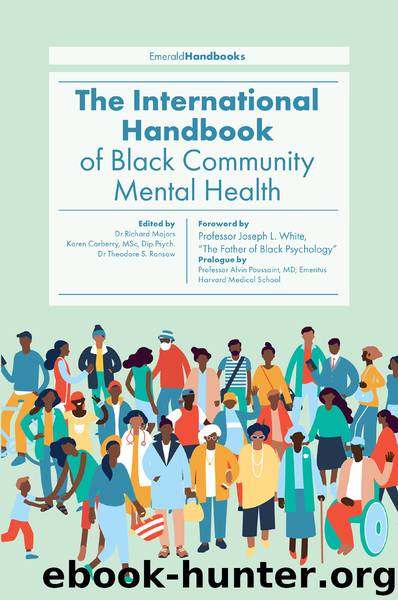The International Handbook of Black Community Mental Health by Richard Majors;Karen Carberry;Theodore Ransaw;

Author:Richard Majors;Karen Carberry;Theodore Ransaw;
Language: eng
Format: epub
ISBN: 9781839099663
Publisher: Emerald Publishing
Published: 2020-05-18T16:00:00+00:00
Self-employment
One aspect of the VR program that has not been studied very much is self-employment. VR counselors can use self-employment to help address the employment disparities for individuals with disabilities (Ashley & Graf, 2018). Revell, Smith, and Inge (2009) presented a summary of the RSA-911 database regarding state-by-state closures for self-employment compared to closures for regular employment (status 26) for FY 2003, FY2005 and FY2007. The total results indicated a slightly decreasing tendency from 4,067 cases of self-employment in 2003, to 3,388 cases in 2005 and 3,246 cases in 2007. These cases represent only 1.93%, 1.69%, and 1.63% of the total closed cases in the United States during those fiscal years. As the numbers indicate, self-employment is not widely used in the VR system, with great disparities from state to state. For instance, the state of Mississippi reported the highest number of cases in 2007 (572) while the District of Colombia reported no cases in 2003.
Arnold, Seekins, and Spas (2001) reported the results of a survey from 330 self-employed individuals with disabilities. A total of 66% of the respondents were male, 88% White, 2% were African Americans, and 2% were Hispanics. A total of 80% were between 30 and 59 years old, and 79% had more than high school education. Among the top reasons identified for self-employment, respondents indicated: Wanted to work for myself (56%); identified need for product/service (48%); wanted to make more money (46%); wanted to own a business (46%); needed to create own job (44%); and to accommodate a disability (i.e., flexible hours and/or working conditions) (43%). More than half of respondents made initial investments of less than $10,000. Initial investments came from one or more sources, such as personal savings (59%), credit card purchases/cash advances (30%), loans from family members (25%), lending institution loans (18%), and/or state VR agency funding (16%). A total of 30% of respondents’ businesses supplied over half of their total household income; 39% reported that their business incomes were adequate to maintain their desired standard of living. Finally, 34% of respondents earned $5,000 or less annually. A total of 10% earned between $5,001 and $10,000; 10% earned between $10, 001 and $20,000; 8% earned between $20,001 and $30,000; 10% earned between $30,001 and $100,000; 14% earned between $100,001 and $500,000; and 6% earned $500,000 or more. Clearly, some of these businesses were very profitable.
A limitation of the study was that the respondents to the survey were members of the Disabled Business Persons Association (DBA) and/or individuals who had sought assistance from state VR agencies. Their responses may not be representative of all people with disabilities who are self-employed/business owners. It is very difficult to conduct such a “population-based” study. Other self-employed people with disabilities who have not received VR services or who are not DBA members may or may not be similar to these respondents.
Entrepreneurship can be a viable career option for many people with disabilities and is increasingly being promoted as an effective employment strategy for person with disabilities (Arnold &
Download
This site does not store any files on its server. We only index and link to content provided by other sites. Please contact the content providers to delete copyright contents if any and email us, we'll remove relevant links or contents immediately.
Should I Stay or Should I Go? by Ramani Durvasula(7436)
Why We Sleep: Unlocking the Power of Sleep and Dreams by Matthew Walker(6370)
Fear by Osho(4499)
Flow by Mihaly Csikszentmihalyi(4496)
Why We Sleep by Matthew Walker(4197)
Rising Strong by Brene Brown(4196)
How to Change Your Mind by Michael Pollan(4116)
Too Much and Not the Mood by Durga Chew-Bose(4103)
The Hacking of the American Mind by Robert H. Lustig(4098)
Lost Connections by Johann Hari(3933)
He's Just Not That Into You by Greg Behrendt & Liz Tuccillo(3720)
Evolve Your Brain by Joe Dispenza(3509)
The Courage to Be Disliked by Ichiro Kishimi & Fumitake Koga(3266)
Crazy Is My Superpower by A.J. Mendez Brooks(3210)
What If This Were Enough? by Heather Havrilesky(3204)
Resisting Happiness by Matthew Kelly(3201)
Descartes' Error by Antonio Damasio(3168)
The Book of Human Emotions by Tiffany Watt Smith(3148)
In Cold Blood by Truman Capote(3143)
